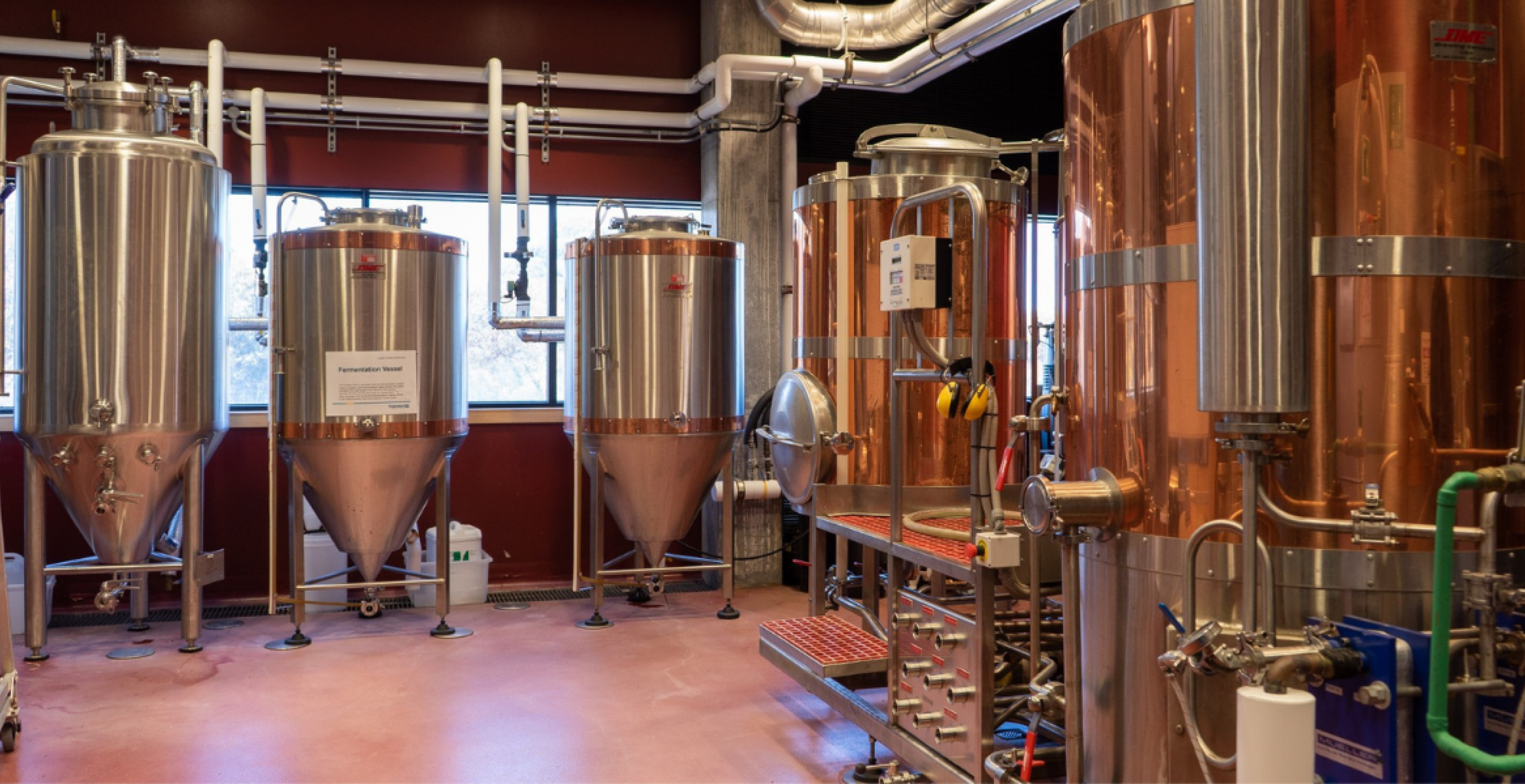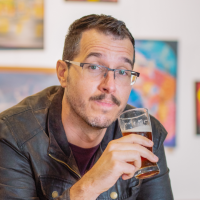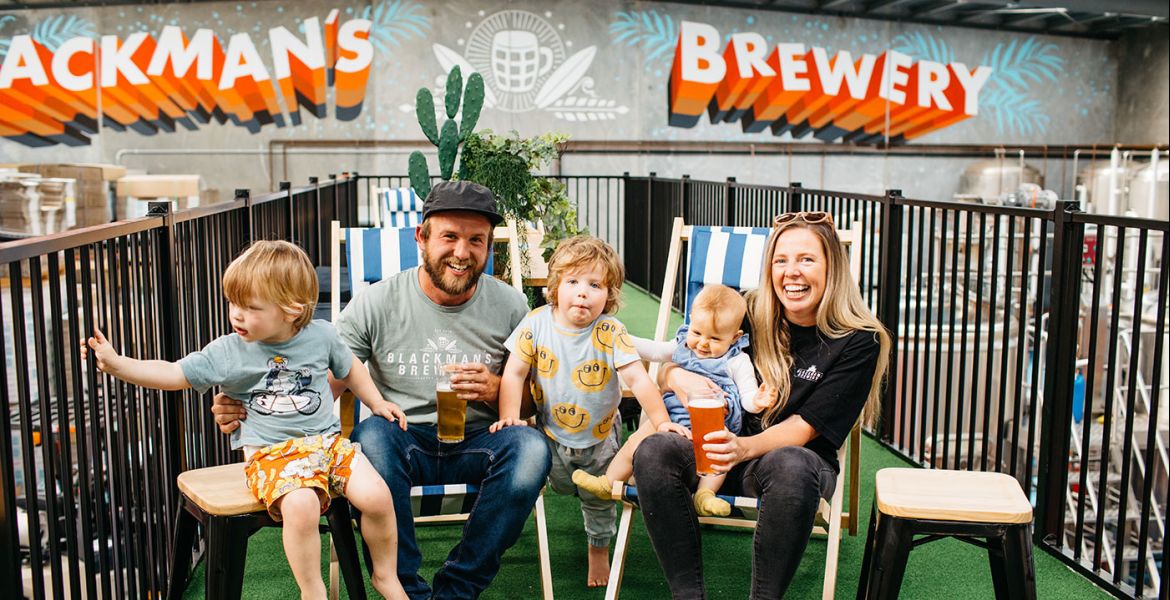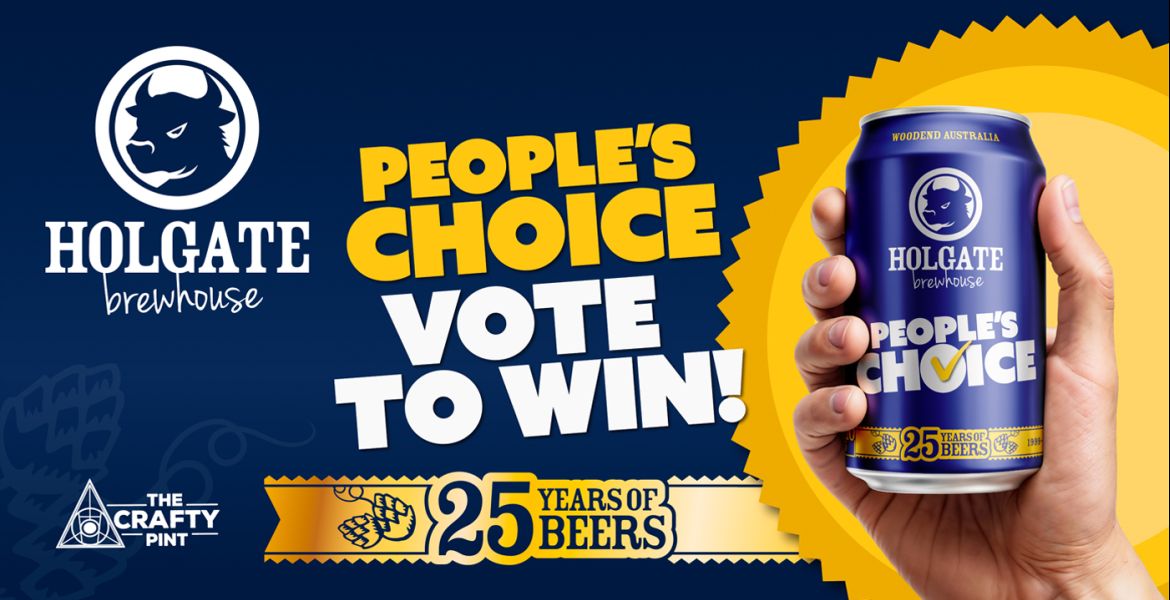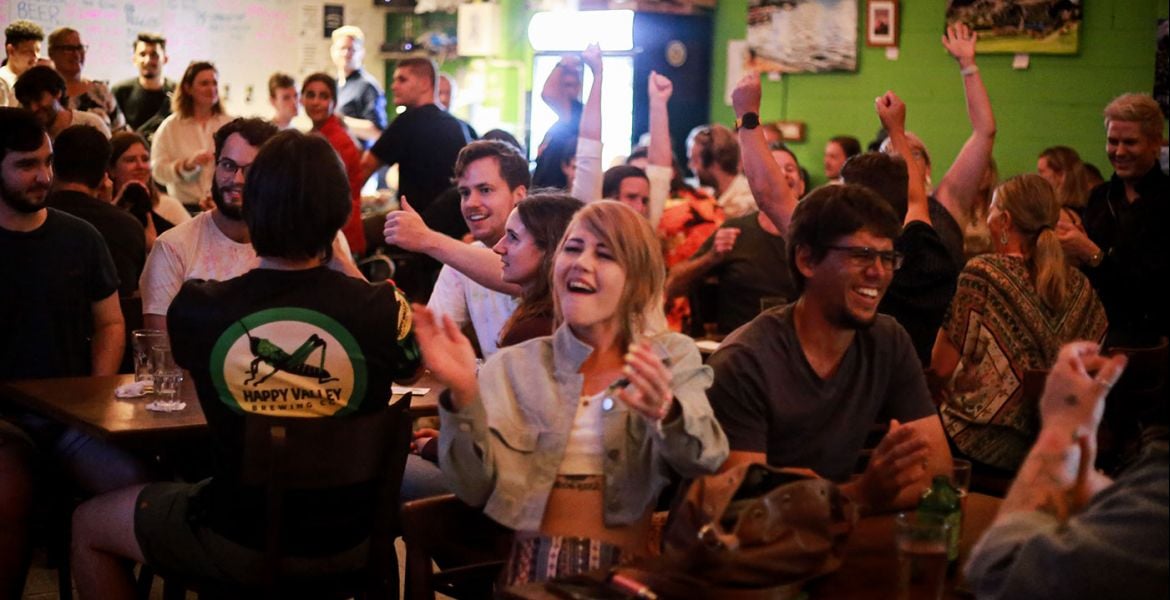As the year draws to a close, students of a certain Ballarat institution are winding up their postgraduate studies in brewing for the year. Their institution can boast that it’s the only one in Australia to offer postgraduate studies in brewing, but for the students, it’s not all academic – they’re learning about the ingredients and processes involved in making beer so they can work in the industry, pumping out the good stuff for others to enjoy. (And, of course, they’ll get to taste the fruits of their labour.)
The above is true of 2021 but could have equally been written half a century ago in 1971, since this year marks the 50th anniversary of the brewing course at Federation University.
When the Graduate Diploma in Malting and Brewing was first taught in 1971 at the Ballarat Institute of Advanced Education, there was nothing like it in the Southern Hemisphere. It would have been sheer hubris for anyone to declare it would create a legacy of brewing education in little ol’ Ballarat.
But as Dr Andrew Greenhill, one of the main lecturers of the current brewing course, points out: “Someone had the foresight 50 years ago to think, ‘Maybe we could teach that.’”
And if you’ve enjoyed beers from Bright Tank in Perth, or Dainton in Melbourne, or Revel in Brisbane, or even Coastal Brewing tucked away on the NSW coast in Forster, then you’ve tasted the fruits of that foresight via brewers who learned from the course.
Same Same But Different
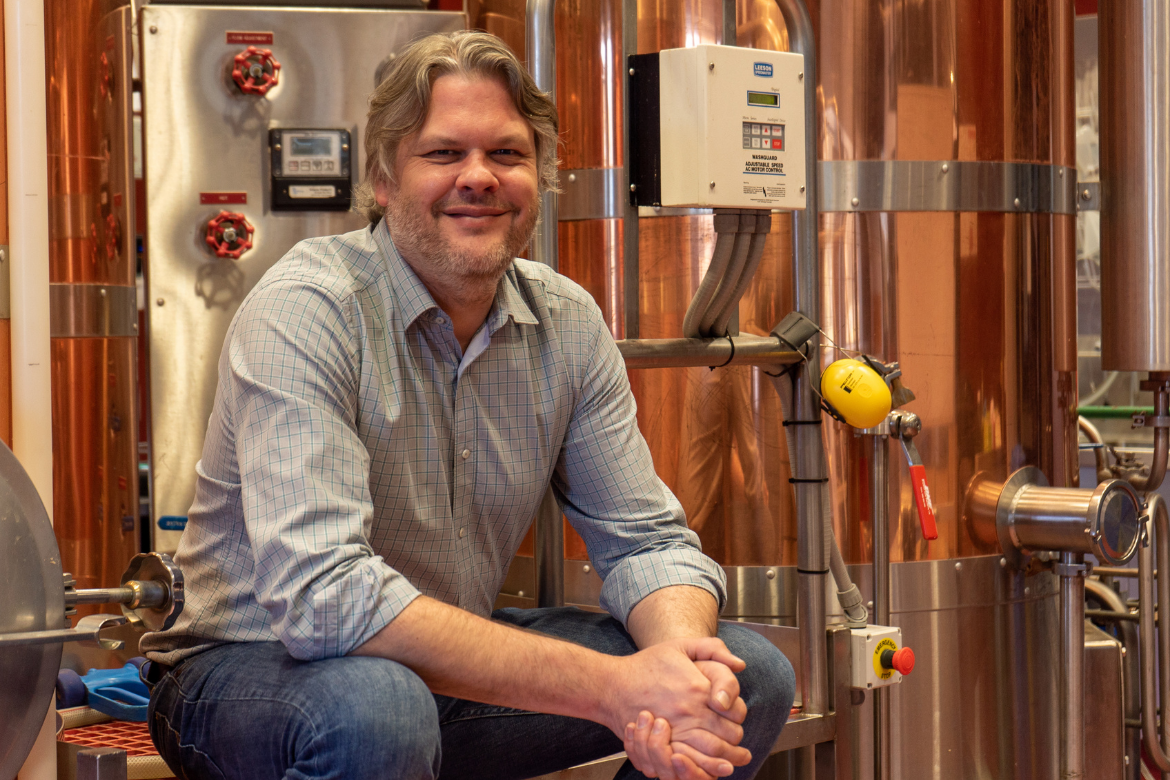
The postgrad brewing course has survived decades of organisational reshuffling, through the University of Ballarat to what is now known as Federation University. Today, the majority of the course is taught online, and can be accessed from anywhere in Australia. But a couple of times a year, students show up on campus to do a stint on the university’s 6hL DME brewhouse.
Dr David Bean, who heads up the brewing course, says: “The brewery is the centrepiece of this building, which is the centrepiece for the campus. You walk into the building, through the front doors, there are big glass windows and the brewery’s there – all the stainless and stuff. It looks really beautiful.”
In 1971, the visual representation of the course wasn’t a row of copper tanks in a room on campus. Rather, students were looking across the road at the Ballarat Brewing Company; you can still look up at the red brick brewery tower from Armstrong St South. In those earlier days, the course was largely aimed at brewing lager on a large commercial scale, such as was happening in the production brewery opposite the campus.
Andrew says: “When we started, it was really about training people going to the small number of fairly sizeable breweries, whereas our market now is primarily people wanting to either work in the craft beer industry or often start up their own brewery.”
While many aspects of brewing remain unchanged over the past decades, the beer scene in Australia is a moveable feast. As such, the content covered in the course has evolved to keep up with the evolution of the industry and drinkers’ expectations.
“The course has always been about the science of brewing,” David says. “How to make a good, bright beer. A lager’s a difficult style to make, and do it well. But once you know that, you can make any sort of permeations.
“We still maintain that philosophy… but going forward, the scene is quite dynamic and changing. Being aware of those trends, and some of the science behind those trends, is going to be important as well.”
The course now touches on topics ranging from lactobacillus to low alcohol beer, exploring the way these affect the nature of brewing. There’s also been a shift in focus on how some topics are approached as the beer industry interacts with ingredients and styles in new ways.
“Hops are more important than they were 20 years ago,” he says. “A bit longer than five years ago, I would have only talked about lactic acid and bacteria as brewery contaminants. Clearly, that’s not the case anymore, so the way we present this information has to change.
“It really wasn’t that long ago that the bacteria were the enemy of the brewery. Now it’s about, ‘Which bacteria do we want?’”
Theory and practice
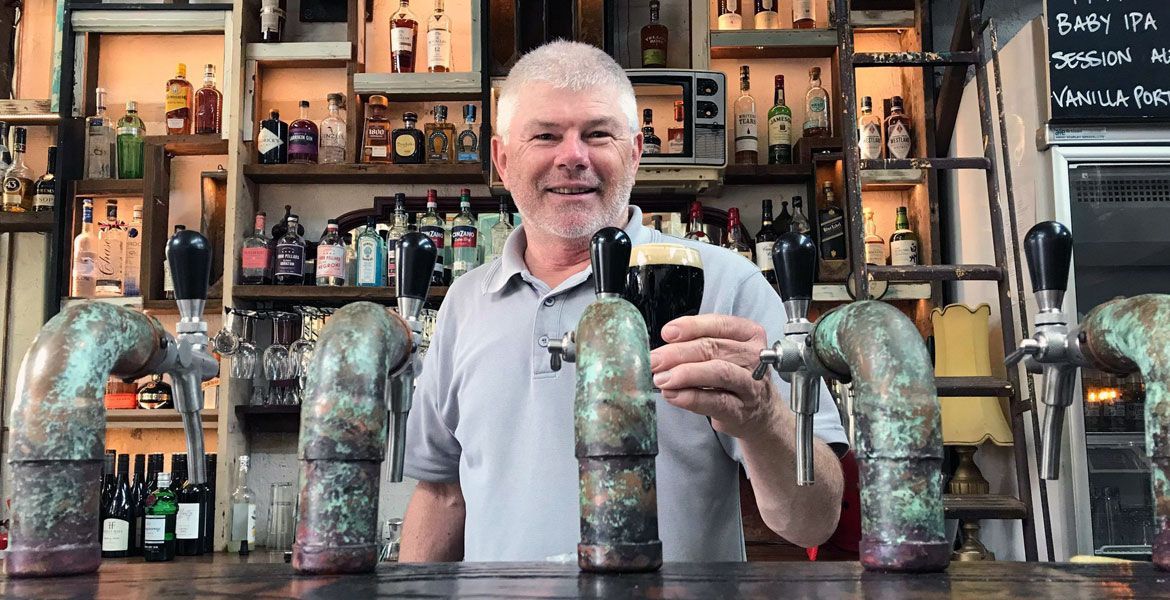
As well as the theory covered in the year-round online course – with units on raw materials, the brewing process, yeast and fermentation, and downstream processing – students are given an intense bout of practical learning once a year on campus. It’s a jam-packed week that involves brewing, chemical analysis and sensory evaluation, as well as visiting local breweries and malt houses.
This structure of the course – a longer period of remote learning with intermittent in-person learning – has been in place since 1998, when Dr Peter Aldred (pictured above at Aunty Jacks) was brought on to convert the course from a six-week block to a longer correspondence course.
“My philosophy is that nothing beats being face to face and being hands on on a regular basis,” Peter says. “But the unfortunate part of today is that if people want to train or retrain, they often don’t have the capacity, either financially or time-wise, to be able to get to Ballarat for such extended periods of time.”
The change made the course accessible to people around the country – first as a correspondence course, and then coming online as the technology became available in the early 2000s. The brewing course was one of the early adopters of online education, even within the university.
But Peter, who headed up the course from 1998 to 2020 before "retiring" to brew at Aunty Jacks in Ballarat, kept practical learning as a key element of the course. In the 70s, students of the course went on tours of breweries and malt houses in different states to see the varying technologies at work in the industry; from the 2000s, even with the remote learning and the installation of a brewhouse on campus in Ballarat, students were still taken on road trips to visit breweries.
“Typically we’d see a large scale production brewery like CUB or Little Creatures, so they see this is just about the highest technology you can get worldwide… and then we’d see lots of smaller breweries that might be put together with gaffer tape and Hay-Band, or put together with old dairy tanks, so people can see the range of options available.
“I’ve probably seen 300 breweries in my life. Never seen two the same."
But even with all this, Peter always knew the students he sent out with a graduate certificate weren’t yet ready to open a craft brewery. He points out that no one who finishes a law degree is fully equipped to open their own practice without first doing an internship, and that those who study brewing should expect to go work in a brewery for an extended period of on-the-job "training".
“We provide people with all of the background theory… they learn to do some basic microbiology; they learn to do some basic chemical tests, like measuring colour, bitterness and alcohol; they get to do a couple of brews on the brewery; we get to do some pretty intensive sensory work," he says.
“But just like any other career you may be in, it’s all a process of continuing education [once you’re working in a brewery]. The couple of years with us is just the start of the next twenty years of your life.”
Bringing People Together
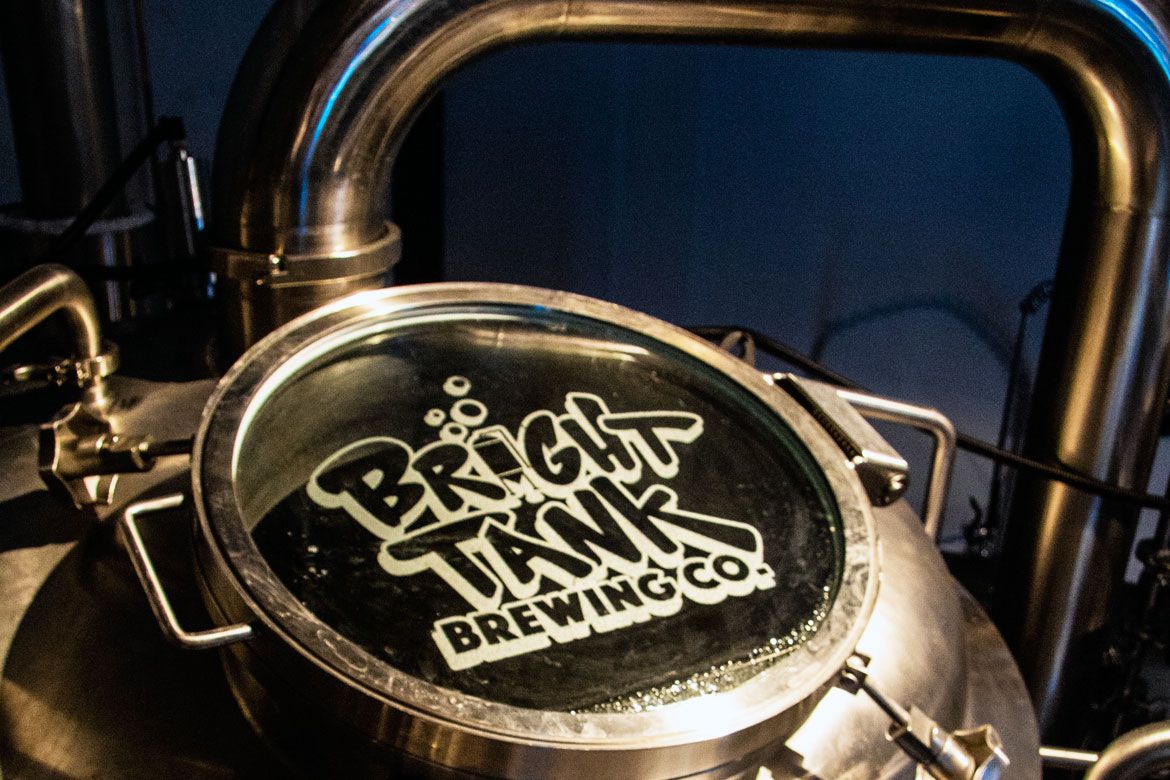
As important as the educational side of the course is, Peter sees one of the great values of the course to be the relationships students form, even with the remote learning format. This ongoing community was somewhat of a highlight of Peter’s 22 years of teaching brewing.
“The thing that stands out to me is the camaraderie and co-operation that the students develop online, and really reinforce when they attend at the workshop. And they have built lifelong friends. And I’ve actually built lifelong friends from some of those students.”
Just as a love of beer brings different people together, it seems a love of learning about brewing can have the same effect. When asked what the current cohort of students looks like, David notes that there’s always a wide variety of people.
“From all walks of life, really. Some of them are relatively young – maybe mid-20s – to later in life – maybe retiring, and starting to pick up a bit of brewing as a retirement program… There’s going to be a few more female students next year, which is a pleasing trend, to see it’s not just a polarised field.
“In terms of academics, although we get into some reasonably hard science, not all of them have a science background, and we don’t require that of them… [But] we need to have confidence that they have the ability to learn and be self-directed.”
There are some things common among most of the students – most have experience home brewing; most want to work in the brewing industry; most have a previous degree. But Andrew notes one thing that stands out.
“I think if you find one thing that is common in all of them,"he says, "it is passion. All of them are passionate about brewing. And that makes it great to teach.”



